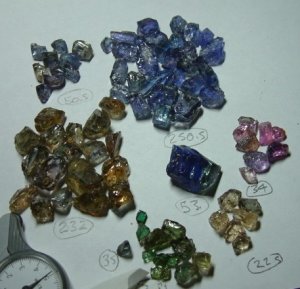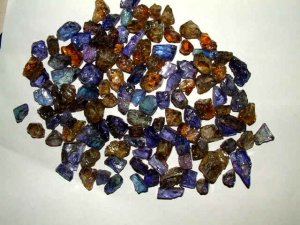- Joined
- Feb 22, 2010
- Messages
- 251
To become radioactive, the material would have to be exposed to neutron radiation. That batch of Topaz that was radioactive was probably put inside a fission reactor chamber. The neutrons changed the atoms to unstable isotopes and they were radioactive. All the other particle radiation does not change the atoms as such. Looking up Cobalt-60, it yields beta particles (high energy electrons) and ionizes that material. Which would not be radioactive.
BTW, Cobalt-60 is synthetic. They create it be exposing Cobalt to a neutron source.
BTW, Cobalt-60 is synthetic. They create it be exposing Cobalt to a neutron source.






300x240.png)